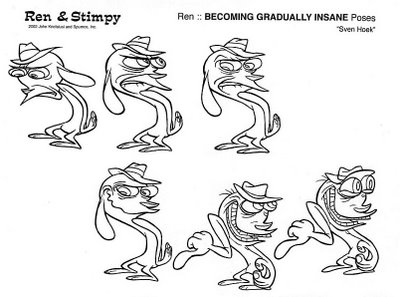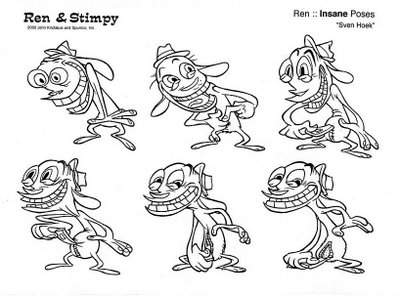
A storyboard artist is really supposed to be the writer on a cartoon. That's why it's called "story"board. Traditionally, people like Bill Peet, Warren Foster, Mike Maltese and other revered writers from the classic cartoons all drew their storyboards. They were all artists.
They drew them very roughly. They weren't expected to draw finished detailed characters and backgrounds- because this would slow down the process and distract them from thinking about story.
2) To Draw more detailed, Structured and Finished Poses

In television animation, if you have to send your animation to another land, then the only way a director can have anything to direct is to supervise the finished poses and background layouts here.
A good layout artist takes the storyboard poses, draws them
bigger,
more finished,
more details and
more structured.
He also adds more poses with the director.

 Most of these poses were drawn at the layout stage; they weren't in the storyboard.
Most of these poses were drawn at the layout stage; they weren't in the storyboard.If you want to have any detailed and specific control over the finished acting and performances of the characters, you can use layouts to do it.
We always did this at Spumco and our characters' performances are what many fans remember about the shows. e could not have done it without using layouts the way we did.
When Nickelodeon took over Ren and Stimpy, at some point they abandoned layout and you can see the difference. They instead, took small "thumbnail" storyboard sketches and sent them overseas to have them blown up into layouts. That's why the characters later looked so simple-almost like stick figures.
This process of drawing tiny drawings, then actually using them for finished animation poses was used on later shows and ultra-simple became a trend. If you want better stories and better performances from your characters, you should separate storyboard and layout into 2 different jobs and use each step for their particular advantages.
3) To Separate the Backgrounds From the Characters
4) Making the poses work with each other and with the background- functionality
In general: The layout artist usually should be a superior draftsman. A storyboard artist should be someone funny who can tell a story in rough pictures.
The best people are usually those who have experience doing each others' jobs and have eventually settled into their specialty once they find out what they are best at. Having animated should be essential too, but unfortunately most of those jobs have gone to Asia. (Not counting Flash animation, which is more like puppetry in 2 dimensions)
There is more to say about the value and techniques of layout, and I am going to organize a pile of layout posts into the "cartoon curriculum" blog. This is just a quick overview.